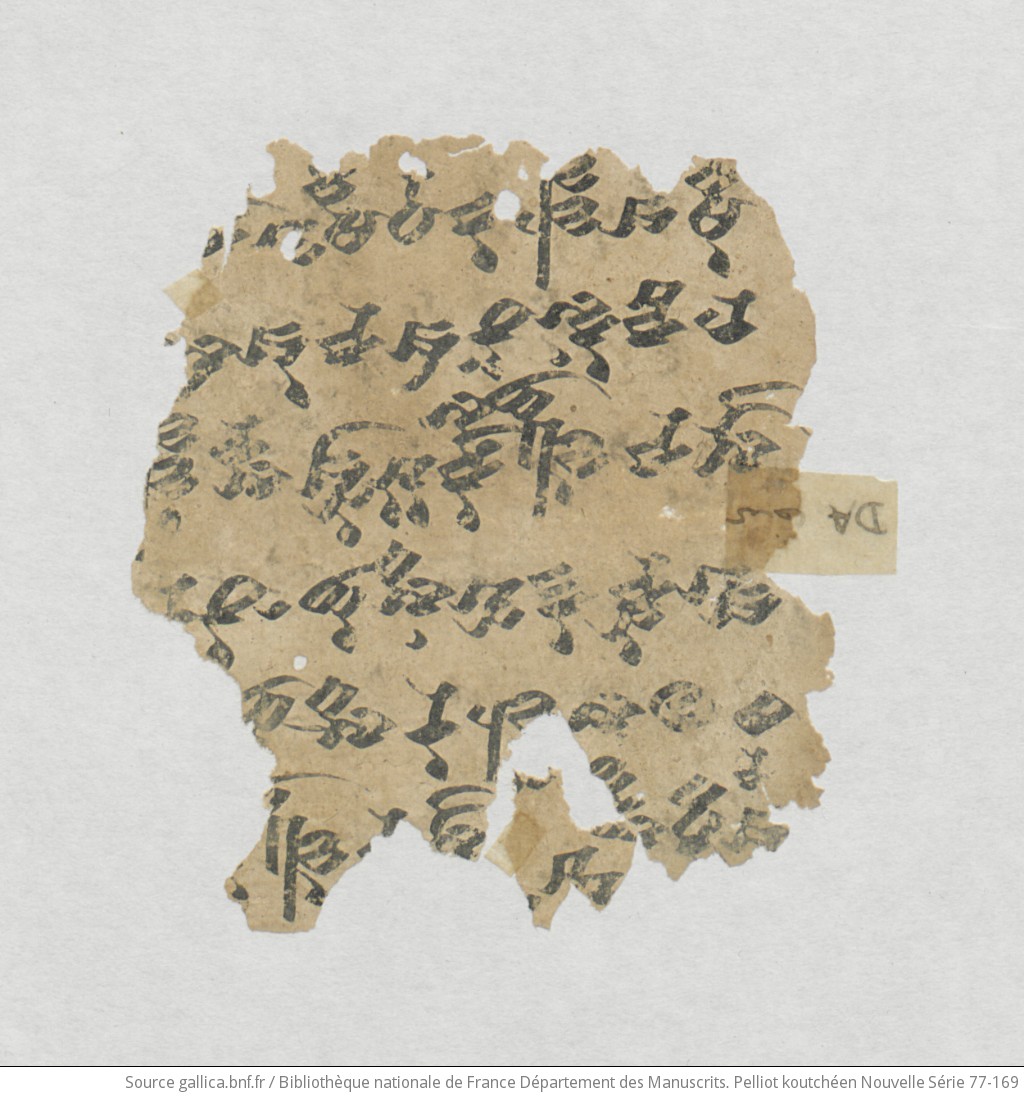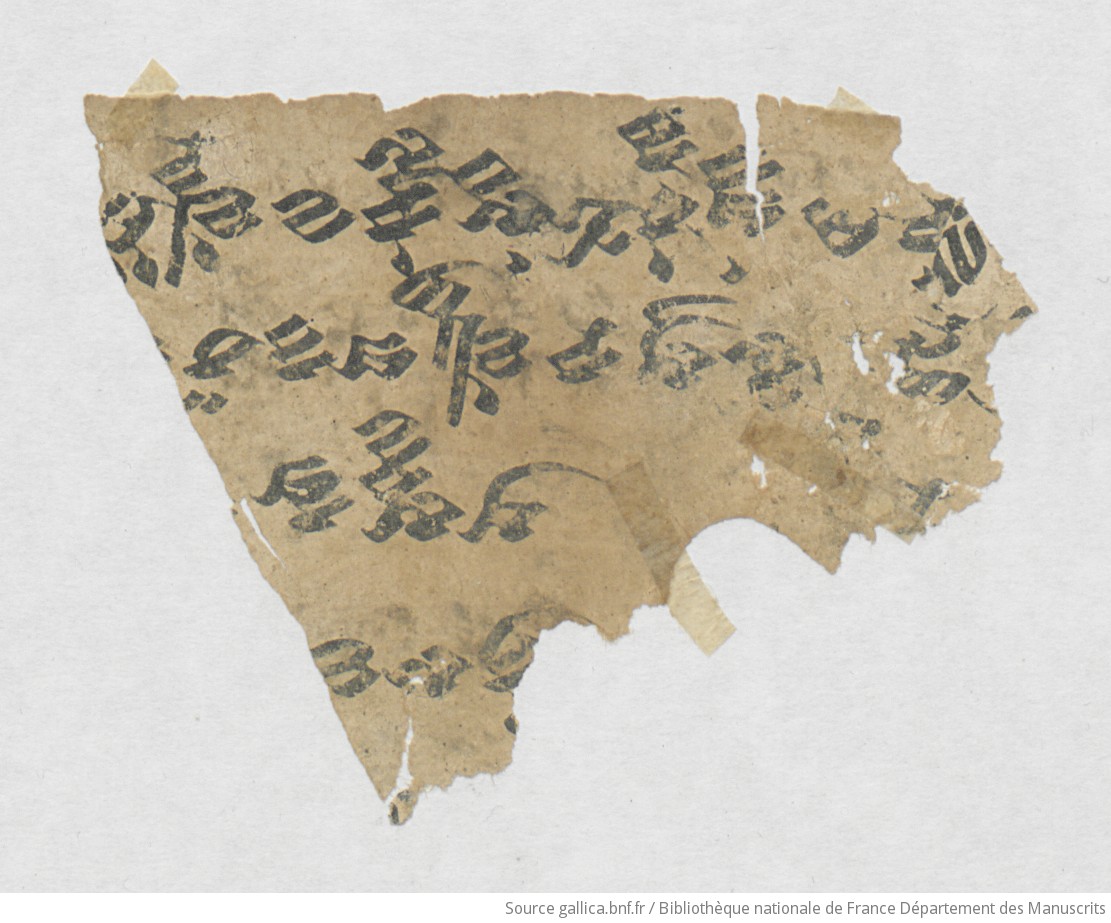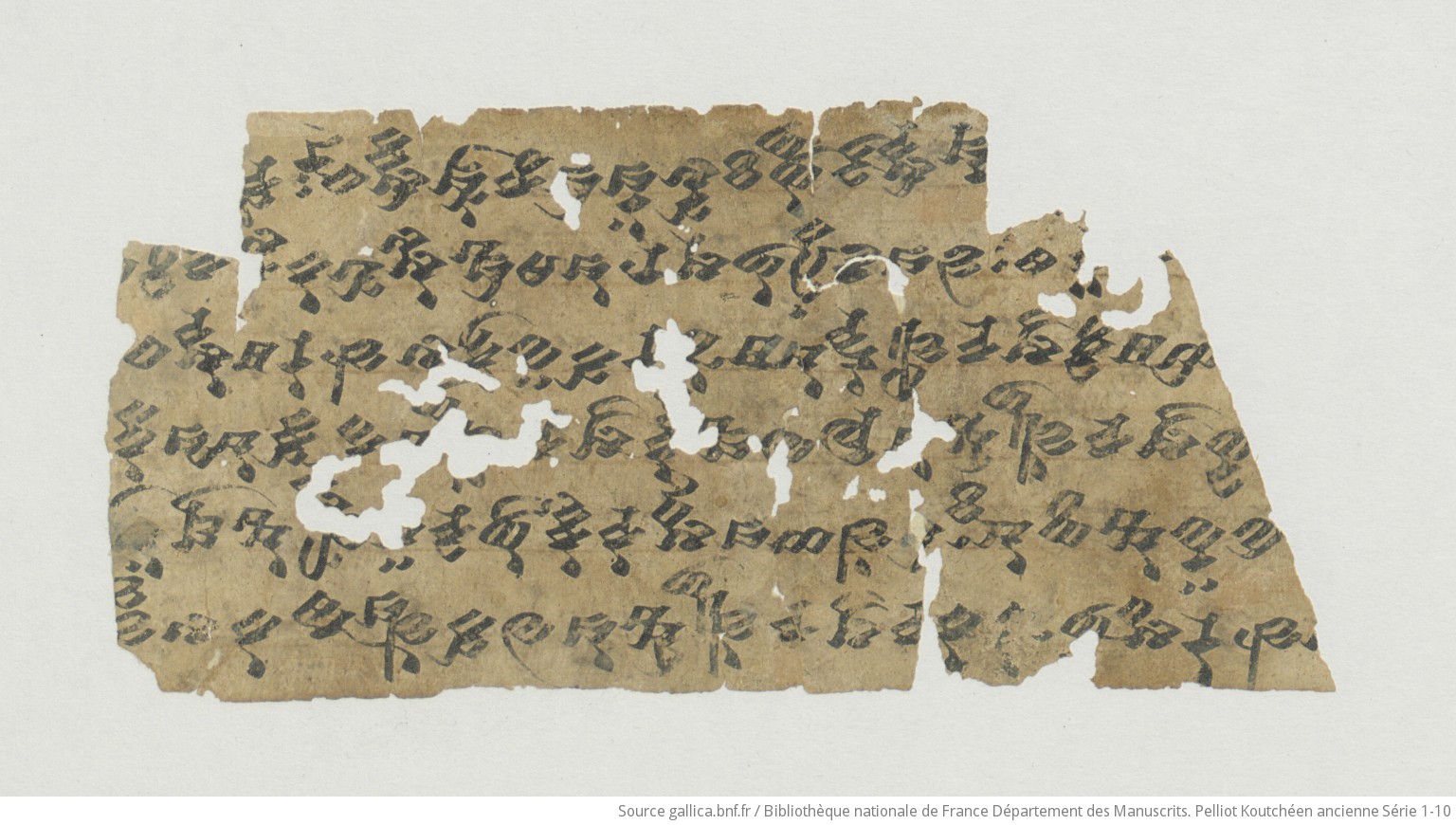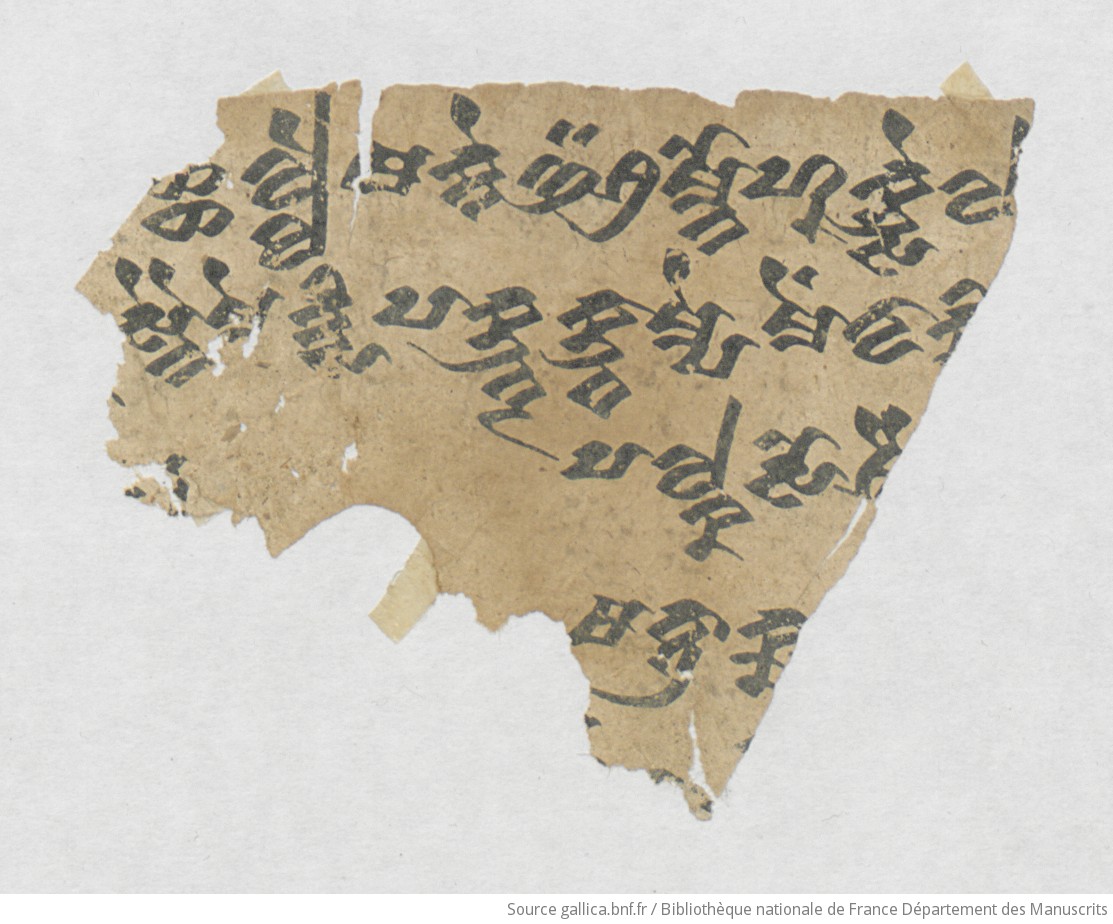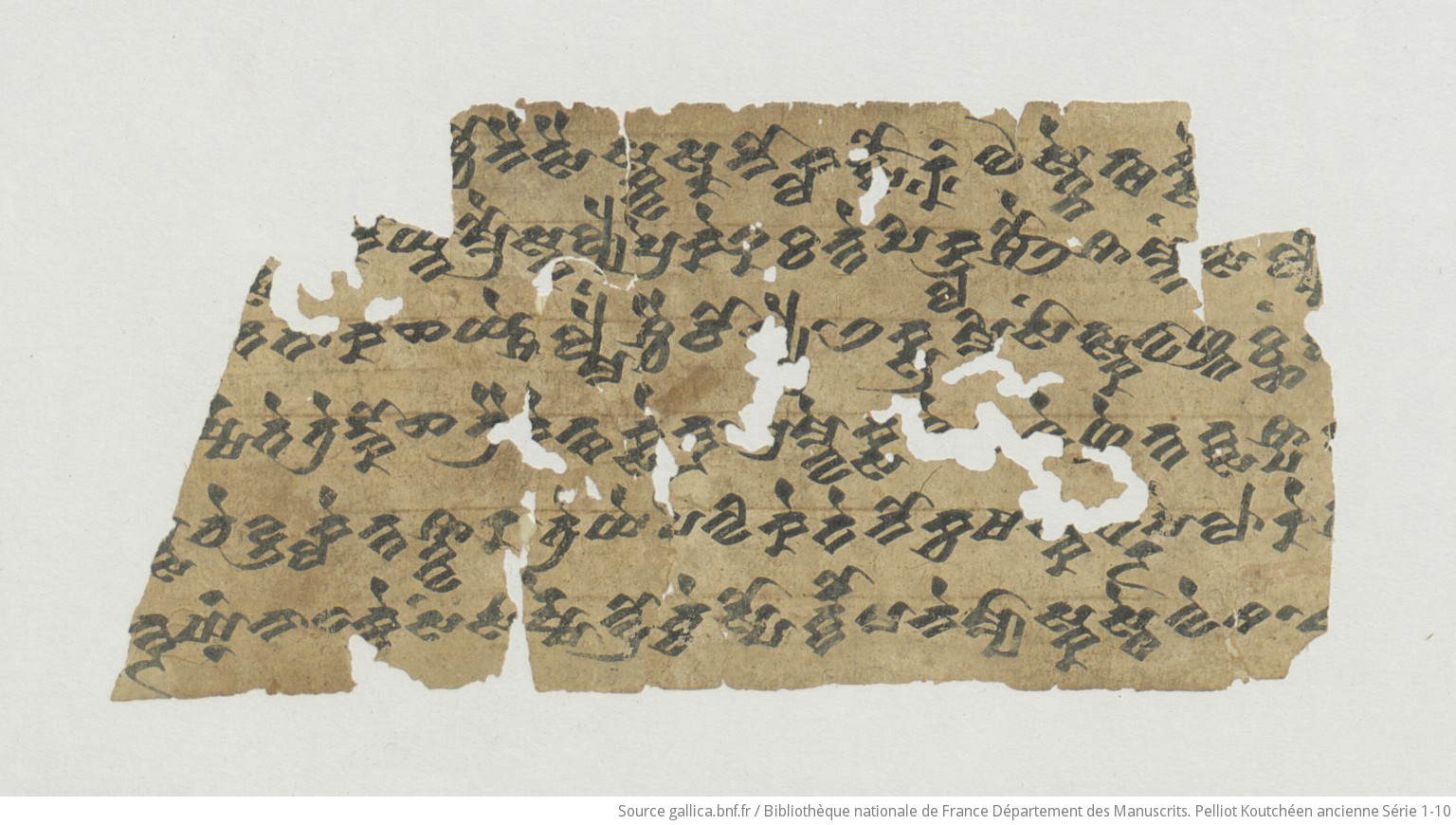Work in progress
PK AS 7L
| Known as: | PK AS 7L; Pelliot Koutchéen Ancienne Série 7L; K 12; PK NS 123a; PK NS 263a |
|---|
| Cite this page as: | Georges-Jean Pinault; Melanie Malzahn (collaborator); Michaël Peyrot (collaborator). "PK AS 7L". In A Comprehensive Edition of Tocharian Manuscripts (CEToM). Created and maintained by Melanie Malzahn, Martin Braun, Hannes A. Fellner, and Bernhard Koller. https://cetom.univie.ac.at/?m-pkas7l (accessed 04 Jul. 2025). |
|---|
Edition |
| Editor: | Georges-Jean Pinault; Melanie Malzahn (collaborator); Michaël Peyrot (collaborator) |
|---|
| Date of online publication: | 2012-02 |
|---|
Provenience |
| Main find spot: | Duldur-akur |
|---|
| Specific find spot: | DA angle Ouest de la cour |
|---|
| Expedition code: | DA Angle cour O. 30,7 (AS 7L); DA cour (NS 123a); 882 (NS 263a) |
|---|
| Collection: | Bibliothèque nationale de France, fonds Pelliot Koutchéen (Paris) |
|---|
Language and Script |
| Language: | TB |
|---|
| Linguistic stage: | classical |
|---|
| Add. linguistic characteristics: | archaic; late |
|---|
| Script: | classical |
|---|
Text contents |
| Title of the work: | Karmavibhaṅga |
|---|
| Text genre: | Literary |
|---|
| Text subgenre: | Doctrine |
|---|
| Verse/Prose: | verse |
|---|
| Meter: | 665 (4x) |
|---|
Object |
| Manuscript: | Karmavibhaṅga δ |
|---|
| Material: |
ink
on paper |
|---|
| Form: | Poṭhī |
|---|
| Size (h × w): | 7.7+6+8.1 × 7.3+7.8+16.4 cm |
|---|
| Number of lines: | 6 |
|---|
| Interline spacing: | 1.2 cm |
|---|
Images
Transliteration
| lf | [100] (–) 4 |
|---|
| a1 | ma «ka» tn(·) [skw](·) (–) sru [k](·) lyñe ṣṣe (– – – – – – – – –) [s] (–) lā re sta(·)¯ ¯ñä • te t[e] ka sru ka lyñe ṣṣī me o no lme tsa ne sa ll(·) (– –) /// |
|---|
| a2 | sa tu sa lā re sta(·)¯ ¯ñä [sru] (– – – – – – – – – –) wā rwä ṣṣe ñca ṣe¯ ¯k• sā le ya ma stra ke ktse ñre ki [p]ä lsko ṣṣe ā [st]reṃ /// |
|---|
| a3 | mpa kau nne po staṃ ñe • ce ra (– –) ○ ntre sa [l] (– – – – –) rñi sru ka lyñe ṣṣī [m]e 5 tu mpa k[uc]e sru ka [lyñe] [ma] nta kno ṣe mi tne – – – – – /// |
|---|
| a4 | srū ka lyñe kuse ṣai mrau ska lle – – [k](·) (·)(·)[ṣ](·) ○ ṣra skwa nma (– –) yā ma cci sru ka lyi ṅke ṣe¯ ¯m cau ra no wä ntre sa lā re ma ske ta /// |
|---|
| a5 | rā kṣa tseṃ ceṃ mā ka me sā – – – – – yū – tsi sru ka lyñe ma nta cä (–) – – – ·[eṃ] sa : jā ma da gniṃ ñe su rā me śa mpā sse po ne ks(·) k[ṣ]a tri [y] /// |
|---|
| a6 | śke ma llā ne 8 śa¯ ¯k pi [ku] (– – – –) kaṃ śā mnaṃ¯ ¯ts te po staṃ kuse wa lke śai (–) – – – – – nmu skā lla ññe ka rso rmeṃ mā kca mrau sknā ta¯ ¯r • kau /// |
|---|
| b1 | śā mña na e rsna sa śai – – – – – – s̝s̝a lle ma kte ñä śra mno 8 kuse l[a] – – – (– – –) śco nai tsai skwa ssu no kla ntso¯ ¯ī o stne tsa kse /// |
|---|
| b2 | ṅko lma ntse ā ntau sai s̝a – – – snai me ntsi pa kutra kuta mpe meṃ wā [k]i – – – (·)(·)s(·) (–) [ko] yn(·) mrau ska lye pre ke 9 ka nte pi kula śau¯ ¯l śā mnaṃ ts (–) ly[po] – – – /// |
|---|
| b3 | ñya tse nta sa wa wā rpau ai ks[na](·) – – – : ○ pa lka so śai (– – – –) ta tā ka s̝a yśe lmeṃ ścai co lye • la ksra mi sāṃ tska wā ñna ks̝aṃ [l](·)(·) /// |
|---|
| b4 | – e ṅku ke re pa te ce wkne su [k](·) (–) ma ntrā kka (– – – –) [r]ṣṣ[e] te tre ṅko s̝a nrai ne tsa kse ntra • bra mwe ksa we (–) we ñe nta ntsa śpā [l](·) /// |
|---|
| b5 | nmeṃ swā ra lyñe la kle nta – – /// /// mts· ce wla kle nta śtwā ra tre ye pe wi ke te no kca ma [s]k(·) ta¯ ¯r ṣe lā re [ś](·) (–) – – /// |
|---|
| b6 | (–) wä ścä (– –) ma k(·)e ra wra ṣ[ṣ]i (– – – – – – –) – – – – ntra 10 2 nā ṭa kne saṃ sā rṣṣe wro cce spo rtto ma ne myā ska ste we sa • [e] /// |
|---|
Transcription
Translation
| a1 | (Whatever the beings enjoy in the saṃsāra) as much happiness here, [4a] (the idea) of death [is] (the great cause of these [forms of] happiness;) (therefore) [it] is dear to me [4b]. [If] suddenly the beings (would not) have the idea of death, [4c] (then we would see the sufferings in the same way); |
|---|
| a2 | therefore [it] is dear to me. [4d] [If] (the idea of de)ath (is a friend) [who is someone] always urging, [5a] he provides a basis for a pure (exercise?) of body, word, [and] mind. [5b] |
|---|
| a2+ | [If] it [i.e. the idea of death as a friend] comes to lead him, it goes) with (him rejoicing) for the ultimate day. [5c] |
|---|
| a3 | By this noti(on) also the idea of death (is d)ear to me. [5d] Therewith whichever death some beings here just so ..., [6a] ... the death, who would feel repulsion. [6b] |
|---|
| a4 | Even ..., because of the [forms] of happiness, we would then have died without having done ... [6c] By this notion also (the idea of death) is dear (to me). [6d] ... |
|---|
| a4+ | these many rākṣasas, ... [7a] |
|---|
| a5 | ... not at all (able) to overcome death ... of ... [7b] Rāma, this haughty son of Jamadagni, killed all kṣatriyas. [7c] ... |
|---|
| a5+ | the little (son?) oppressed him. [7d] |
|---|
| a6 | This life which would have to be lived by the humans afterwards, would last [only] ten years. [8a] Having known about the perishing (of many beings), he does not feel repulsion for anyone. [8b] ... |
|---|
| a6+ | [8c] ... |
|---|
| b1 | live with human form ... like I myself. [8d] Now which one ... the (snake?) full of hatred, he will sleep happy. [9a] Burning in the house ... [9b] |
|---|
| b1+ | ... he trusts without sorrow the ... of the elephant. [9c] |
|---|
| b2 | From what the difference ... (of) ..., (it would b)e for (him) the time of feeling repulsion. [9d] A life of hundred years [is] the most (to be lived) for the humans ... [10a] ... |
|---|
| b3 | surrounded by dangers on all sides ... [10b] Look (pl.) at the world! (All) these (beings) have become wild [turned] towards the direction of desires. Like the fish looses [his] d(ear) (life) out of desire for meat ... [10d] ... |
|---|
| b4 | (Whatever external) form (a being) has seized, this one (will be destroyed) for sure in it [= the form]. [11a] In the same manner having clung to (the fire of the saṃsāra), they burn in hell. [11b] With Brahmā voice (this) most excellent among the speakers told (a stanza/these stanzas). ... [11c] |
|---|
| b4+ | ... (taking) pleasure from ... the sufferings ... [11d] |
|---|
| b5 | ... the four sufferings (crush?) him. [12a] Whoever has three or two [i.e., lives?], one dear l(ife) remains ... [12b] |
|---|
| b5+ | ... lovely for him. [12c] |
|---|
| b6 | As they would smell ... they ... [12d] Turning in the great drama of the saṃsāra, you (pl.) [i.e., the desires] make us change [i.e., adopt alternating roles in rebirths] for that [i.e., suffering/death]. [13a] |
|---|
Other
| a2+ | If the idea of death is the former friend that always spurs on, the ground makes pure the ... of body, word and mind; if it comes to lead him [away], and rejoicing he goes with him on a later day, even by this thing [then] the idea of death is dear to me. (cf 52–53) (Peyrot 2013b: 678) |
|---|
Commentary
Linguistic commentary
| * | The text shows some instances of preservation of final -ä in pāda/colon-final position. On the other hand, there are some late spellings and forms and one archaic spelling in läks (b3). |
|---|
| n2 | The 1pl. ṣem is a late, simplified form of ṣeyem, cf. the same in PK AS 7N b6 and also the similar 3pl. ṣeṃ for ṣeyeṃ in other late texts. |
|---|
| n3 | If śampāsse is a derivative in -tstse, it would show a late variant of the cluster. |
|---|
Parallel texts
Philological commentary
| * | PK AS 7L, PK NS 123a, and PK NS 263a belong to one single leaf. |
|---|
| n1 | The parallel leaf PK AS 7N has makā-ykne skwanma ‘many kinds of happiness’, which makes more sense than ‘much happiness’ here. However, the reading ‹tn› here is certain and in addition our text was indeed corrected by the addition of the missing ‹ka› after ‹ma›; while doing so, the scribe could also have corrected the following to ykne if this was the intended meaning. Therefore one is led to assume that the text was incorrectly copied in the first place. |
|---|
| n4 | The separation of mesā is unclear. One may imagine me for mai or vowel sandhi m= esā with the beginning of a privative of sāmp(ā)- ‘to take away, deprive of’. °eṃsa at the end of pāda 7b must belong to a late genitive plural ending (classical -eṃts), nevertheless with preservation of final -ä in pada-final position. |
|---|
| n5 | śke is the end of a two-syllable word, possibly soṃśke ‘little son’. The number 8 at the end of the stanza is certainly mistaken for 7. |
|---|
| n6 | In the second colon of pada 9d an aksara 〈sa〉 can be read which must be the inferior part of a complex ligatura. Since there are not so many possibilities for such a spelling, a genitive in -ntse seems the most likely restoration. The form āntausai may be the oblique singular of a feminine noun āntausa or āntauso, but the initial accent would be abnormal. Alternatively, one may propose the oblique feminine of a PPt āntau from a root āntā-, where such an accent would be correct. This would be the epithet of a following feminine noun being the direct object of the verb päkw- ‘to trust’. It is unclear whether this started with ṣä- or whether one has to read the coordinative particle ṣ with virāma. Although there is clearly a link between the akṣaras, the fremdzeichen is not placed below the line. In any case the presence of this particle here would be somewhat unexpected. In addition, the colon separation is also uncertain, because we may have a 6/6/5 rhythm, which increases the possibilities. |
|---|
| n7 | The reading and interpretation of the last colon of pāda 10c as yśelmeṃśc aivolyce by Schmidt 1994: 222 for aiwolcce is unwarranted. Although the akṣara in question deviates from standard ‹ca› as it is more rounded, a writing ‹va› for ‹wa› in a TB word would be highly unusual in a classical text. What is more, it requires connecting this colon with the next pāda, which is also unlikely. Finally, one has to assume two other deviations from a standard spelling, i.e. palatal ly and non-geminate c. Since we expect a nom./obl. plural masculine, colye cannot be a correct form (unless it is an unknown adverb of some kind). If it refers to cai, one may read a nom.pl. colyi ‘wild’, which would be perfectly compatible with the obl.pl. masculine coläṃ in B 213 a1. The vowel mistake could have been triggered by the palatal liquid. In any case, this current interpretation requires less manipulation of the text and connects it with already known material. |
|---|
| n8 | The assumption by Sieg 1938: 54 that the text should be changed into täry=epe due to the feminine form śtwāra in the preceding pāda is not warranted, because we can perfectly well have masculine forms here, and in any case his interpretation does not make the passage clearer. |
|---|
| n9 | The only correct form would be yielded by assuming a middle optative of wär- ‘to smell’, wräṣṣinträ. The verb form of pāda 13a cannot be read as myāskate (as per Lévi, followed by Sieg); myāskas is actually the expected 2.pl. active of the preterite class II of mäsk- ‘to change’. |
|---|
Remarks
| * | Lévi only edited the fragment PK AS 7L; it can be completed by PK NS 123a and PK NS 263a on the left side around the string hole with PK NS 123a being the left margin. However, there are no complete joints. |
|---|
References
Miscellaneous
other
Lévi 1933: 97-98, 106-107; Sieg 1938: 53-54
Translations
Peyrot 2013b: a2 a3 (678)
Bibliography
Lévi 1933
Lévi, Sylvain. 1933. Fragments de textes koutchéens. Udānavarga, Udānastotra, Udānālaṁkāra et Karmavibhaṅga, publiés et traduits avec un vocabulaire et une introduction sur le «tokharien». Paris: Imprimerie Nationale.
Peyrot 2013b
Peyrot, Michaël. 2013b. The Tocharian subjunctive. A study in syntax and verbal stem formation. Vol. 8. Brill’s Studies in Indo-European Languages & Linguistics. Leiden/Boston: Brill.
Schmidt 1994
Schmidt, Klaus T. 1994. “Zu Stand und Aufgaben der sprachwissenschaftlichen Erforschung des Tocharischen.” In Tocharisch. Akten der Fachtagung der Indogermanischen Gesellschaft, Berlin, September 1990, edited by Bernfried Schlerath, 207–37. TIES Suppl. 4. Reykjavík: Málvísindastofnun Háskóla Íslands.
Sieg 1938
Sieg, Emil. 1938. “Die Kutschischen Karmavibhaṅga-Texte der Bibliothèque Nationale in Paris.” Zeitschrift für Vergleichende Sprachforschung 65: 1–54.

